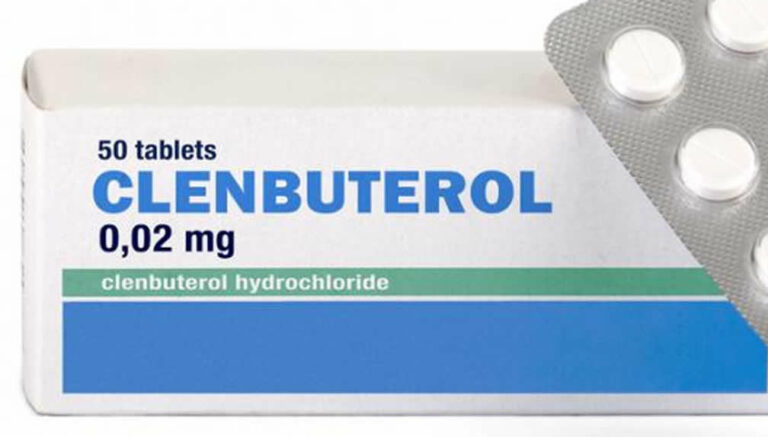Why Rest Days Are Different for Over 50s: The Science Behind Slower Recovery
If you’ve noticed that your body takes a bit longer…
If you’ve noticed that your body takes a bit longer to recover from workouts now that you’re over 50, you’re not imagining things. That three-day recovery period after leg day isn’t a sign of weakness—it’s your body’s natural response to age-related physiological changes that require a fundamentally different approach to rest and recovery.
The fitness advice that worked in your 30s might actually be sabotaging your progress after 50. While younger adults can often train hard with minimal rest days and see consistent gains, older adults who follow the same approach frequently experience plateaus, injuries, and burnout. Understanding why rest days are different for over 50s is crucial for maintaining strength, preventing injury, and staying active for decades to come.
Key Takeaways
- Adults over 50 require 48-72 hours of recovery time between strength training sessions, compared to 24-48 hours for younger adults
- Age-related hormonal changes, slower protein synthesis, and reduced muscle mass make recovery more complex after 50
- Active recovery days with low intensity activities like walking or tai chi are more beneficial than complete rest for older adults
- Sleep quality becomes increasingly critical for muscle repair and growth hormone production in the 50+ age group, and taking enough rest days is essential for optimal recovery and injury prevention
- Two full-body strength training sessions per week with proper rest days are more effective than daily split routines for over 50s

The Science Behind Slower Recovery After 50
The fundamental reason why rest days are different for over 50s lies in measurable physiological changes that occur during the aging process. These changes affect every aspect of how your body responds to exercise and recovers from intense workouts. As a result, older adults require a longer rest period between workouts to allow for proper muscle repair, energy replenishment, and to help prevent injury.
Hormonal Decline: The Recovery Roadblock
Testosterone and growth hormone levels decline significantly as we age, creating a cascading effect on muscle recovery. Research shows that testosterone levels drop by approximately 1% annually after age 30, while growth hormone secretion decreases by at least 14% per decade. These hormones are essential for muscle protein synthesis, satellite cell activation, and overall tissue repair.
For someone in their 50s, this means that the same strength training workout that would stimulate rapid muscle growth in a 25-year-old now requires substantially more recovery time to achieve similar adaptations. The body simply doesn’t have the same hormonal resources to quickly repair and strengthen muscle tissue.
Sarcopenia and Muscle Mass Loss
Starting around age 30, adults begin losing 3-8% of their muscle mass per decade, with this loss accelerating to potentially 15% per decade after age 60. This age-related muscle loss, known as sarcopenia, doesn’t just mean weaker muscles—it also means slower muscle recovery.
Sarcopenic muscle tissue is less metabolically active and takes longer to regenerate after training sessions. The reduced muscle mass also means that the same workout represents a greater relative stress on the available muscle fibres, requiring extended rest periods for adequate recovery. Adequate rest between workouts is essential for building and maintaining stronger muscles, even in the face of age-related muscle loss.
Reduced Protein Synthesis Rates
Muscle protein synthesis—the process by which your body repairs and builds muscle tissue—operates at significantly reduced rates in older adults compared to their younger counterparts. This slower protein synthesis directly translates to longer recovery periods needed between training sessions.
While a 30-year-old might fully recover from an intense workout within 24-48 hours, the same individual at 55 may need 48-72 hours for complete muscle recovery due to this decreased efficiency in protein synthesis.
Respecting these longer recovery periods allows older adults to maximize the benefit of strength training, such as increased muscle strength and muscle remodelling.
Inflammation and Extended Recovery Time
Older adults typically experience higher baseline levels of systemic inflammation, often called “inflammation.” Additionally, the inflammatory response to exercise-induced muscle damage is more robust and prolonged in older individuals.
This means that the muscle soreness and stiffness following strength training workouts last longer, and the clearance of metabolic by-products from exercise is slower. As a result, older adults require more time to recover due to increased inflammation, making strategic rest days essential to allow inflammation to resolve completely.
How Recovery Needs Change: 30s vs 50s vs 70s
Understanding how recovery needs evolve across decades helps explain why rest days are different for over 50s and provides a roadmap for adjusting your exercise routine as you age.
As we get older, allowing for longer recovery periods is essential to prepare the body for future workouts and to prevent injury.
Recovery in Your 30s: Peak Performance Years
In your 30s, most people can maintain a training frequency of 4-5 days per week with minimal issues. High-intensity sessions typically require only 24-36 hours of recovery, and the body readily adapts to split routines that target different muscle groups on consecutive days.
A 35-year-old might perform a challenging deadlift session on Monday and feel completely ready for an upper body workout on Tuesday. The combination of optimal hormone levels, efficient protein synthesis, and lower baseline inflammation allows for quick recovery and frequent training.
Recovery in Your 50s: The Adjustment Period
By the 50s, the physiological changes become more pronounced, and most individuals need 48-72 hours to recover from intense strength training sessions. This represents a significant shift that many people struggle to accept initially.
For example, a 55-year-old performing the same deadlift workout that their 30-year-old self easily recovered from in 24 hours may now experience muscle soreness and decreased performance for 48-72 hours. If muscle soreness persists, it may be necessary to take an extra day of rest to ensure proper recovery and prevent overtraining. This isn’t a failure—it’s a normal adaptation that requires adjusting training frequency from 4-5 days to 2-3 days per week.
Recovery in Your 70s: Quality Over Quantity
In the 70s and beyond, recovery often requires 72 hours or more between strength training sessions. Training frequency typically drops to 1-2 full-body sessions per week, with increased emphasis on mobility work and active recovery.
The focus shifts from maximizing training volume to optimizing the quality of each session and ensuring adequate recovery time. This approach actually produces better long-term results than attempting to maintain the training frequency of earlier decades. Prioritizing recovery not only supports sustained fitness but also helps prevent injuries in the long run.
The Myth of “No Days Off” After 50
One of the most persistent and damaging fitness myths is that taking rest days indicates laziness or lack of commitment. This “no days off” mentality, while potentially manageable in younger years, becomes genuinely counterproductive and dangerous for older adults, especially when it comes to weight training.
The Overtraining Trap
After 50, the risk of overtraining syndrome increases dramatically when adequate rest periods aren’t respected. Overtraining manifests as performance plateaus or declines, chronic fatigue, increased injury risk, depressed immune function, and psychological burnout.
Training hard can be effective for making progress, but it is crucial to balance intense workouts with sufficient rest to avoid overtraining, especially as you age.
Research consistently shows that adults over 50 who attempt to maintain the training frequency of their younger years experience higher rates of tendon and ligament injuries, overuse syndromes, and exacerbation of existing conditions like osteoarthritis. The body simply cannot repair itself quickly enough to handle consecutive days of intense training.
Injury Risk and Connective Tissue Health
Connective tissues—tendons, ligaments, and joint structures—age differently than muscle tissue and require even longer recovery periods. While muscle might feel ready for another workout after 48 hours, the surrounding connective tissues may still be in the repair phase, creating a setup for injury. For example, leg workouts (e.g., deadlifts or squats) may require even longer recovery for the legs and their connective tissues.
Generally speaking, the “no pain, no gain” mentality fails to distinguish between productive training stress and potentially harmful overuse. After 50, the difference between these two becomes increasingly important for long-term health and fitness success.
Strategic Recovery vs. Laziness
Understanding the difference between strategic recovery and genuine inactivity is crucial. Strategic recovery means taking planned rest days to optimize adaptation and prevent injury. It’s an active choice based on understanding your body’s needs and the science of recovery.
Strategic recovery can also include light physical activity, such as walking or gentle stretching, to support recovery without overexertion.
True inactivity, on the other hand, involves avoiding exercise altogether or consistently choosing the easiest options. The key difference lies in intentionality and overall consistency with your fitness routine, not in the frequency of intense workouts.
Smart Rest Day Strategies for the 50+ Crowd
Effective recovery after 50 requires a sophisticated approach that goes beyond simply taking days off from the gym. The most successful older adults implement specific strategies that promote blood flow, support tissue repair, and maintain momentum in their fitness journey. These strategies are designed to help the body recover efficiently and maintain progress.
Active Recovery vs Complete Rest
Active recovery involves engaging in lower intensity activities that promote blood flow and aid recovery without adding significant stress to already-fatigued muscles. This approach is generally superior to complete rest for most older adults.
Effective Active Recovery Activities:
- 20-30 minute walks at a comfortable pace
- Gentle yoga or tai chi sessions
- Easy swimming or water walking
- Light stretching routines
These lower intensity options promote recovery without overexertion. They help deliver nutrients necessary for repair while removing metabolic waste products that can prolong soreness and fatigue.
When Complete Rest Is Necessary: Complete rest should be reserved for specific situations:
- After unusually intense or novel training sessions
- When experiencing unusual fatigue or persistent soreness beyond 72 hours
- During illness or high stress periods
- When dealing with acute injuries or pain
The goal is to stay active while allowing your body to recover, maintaining the habit of daily movement without adding training stress.

Sleep Optimization for Recovery
Sleep becomes increasingly critical for recovery after 50, as this is when the majority of growth hormone release occurs and when muscle protein synthesis peaks. Unfortunately, sleep quality often decreases with age, making optimization strategies essential.
The 7-9 Hour Rule: Adults over 50 need 7-9 hours of quality sleep nightly for optimal recovery. Poor sleep can extend recovery time from 48 hours to 72+ hours after workouts, significantly impacting your ability to maintain a consistent exercise routine.
Sleep Architecture Changes: Aging naturally brings changes in sleep patterns, including more frequent awakenings and decreased deep sleep stages. Deep sleep is particularly important for growth hormone release, making sleep optimization crucial for muscle recovery.
Practical Sleep Optimization Strategies:
- Maintain a cool bedroom temperature (65-68°F)
- Create a dark, quiet environment using blackout curtains and white noise if needed
- Establish a consistent sleep schedule, going to bed and waking at the same times daily
- Limit screen time for 1-2 hours before bedtime
- Avoid caffeine after 2 PM and alcohol close to bedtime
Nutrition Timing and Recovery
Proper nutrition becomes more critical for recovery after 50 due to age-related changes in protein metabolism. Older adults experience “anabolic resistance,” meaning they need more dietary protein to stimulate the same muscle protein synthesis response as younger individuals. Both protein and hydration needs may vary depending on an individual’s body weight, so consider adjusting your intake accordingly.
Post-Workout Protein Requirements: Aim for 25-30g of high-quality protein within 2 hours after strength training workouts. This should ideally come from sources rich in leucine, such as:
- Lean meats (chicken, fish, lean beef)
- Eggs
- Greek yogurt
- Protein powder (whey or plant-based)
- Cottage cheese
Leucine Supplementation: Consider supplementing with 2.5-3g of leucine daily to help overcome anabolic resistance and support muscle protein synthesis. Leucine is particularly effective when taken around workout times.
Hydration for Recovery: Proper hydration supports circulation and nutrient delivery to recovering muscles. Aim for:
- 2-3 glasses of water before exercise
- Regular sips during workouts
- 2-3 glasses of water after exercise
- Overall daily intake of 8-10 glasses, adjusted for activity level, climate, and body weight
Warning Signs You Need More Rest Time
Recognizing when your body needs additional recovery time is crucial for preventing overtraining and maintaining long-term progress. These warning signs become more important and more subtle after 50, requiring careful attention to your body’s signals.
Paying attention to how you feel after your last workout can help you determine if you need more rest before your next session.
Physical Indicators
Decreased Performance: If you notice that your strength, endurance, or motivation consistently decreases from one workout to the next, you’re likely not allowing adequate recovery. This might manifest as:
- Inability to lift the same weights as the previous session, especially when lifting weights
- Feeling unusually fatigued during warm-up
- Requiring longer rest periods between sets
- Struggling with exercises that were previously manageable
Elevated Resting Heart Rate: An elevated resting heart rate (5-10 beats higher than normal) upon waking can indicate incomplete recovery or overreaching. This is one of the earliest and most reliable indicators that your body needs more rest time.
Psychological and Sleep Indicators
Sleep Disturbances: Difficulty falling asleep, frequent night waking’s, or feeling unrefreshed upon waking can all indicate that your body is still in a state of physiological stress from previous workouts.
Increased Irritability: Overtraining often manifests as mood changes, including increased irritability, anxiety, or general negativity toward exercise and daily activities.
Loss of Exercise Motivation: A sudden decrease in enthusiasm for workouts that you normally enjoy often signals that your body and mind need additional recovery time.
Joint and Movement Quality Indicators
Joint Stiffness: Persistent joint stiffness, particularly in the morning or after periods of inactivity, can indicate that you need more recovery time between sessions.
Decreased Range of Motion: If you notice that your flexibility or your ability to move through a full range of motion is consistently reduced compared to normal, this suggests that your muscles and connective tissues haven’t fully recovered.

Adjusting Training Frequency After 50
The transition to age-appropriate training frequency represents one of the most significant adjustments in maintaining fitness after 50. This shift requires abandoning previous training patterns in favor of approaches that respect your body’s changing recovery needs while still promoting strength and overall health.
Even highly trained individuals must adapt their routines to accommodate age-related recovery needs.
The Two-Session Sweet Spot
Research consistently demonstrates that two full-body strength training sessions per week provide optimal results for adults over 50. This frequency allows for maximum strength gains while providing adequate recovery time between sessions.
Why Full-Body Beats Split Routines:
- Allows 48-72 hours recovery for all muscle groups
- Reduces cumulative fatigue compared to daily training
- Ensures each muscle group receives adequate stimulus twice weekly
- Simplifies scheduling and reduces missed body parts
- Better accommodates unexpected schedule changes or extended recovery needs
Spacing Your Sessions: Optimal spacing places strength training sessions at least 48 hours apart, with 72 hours often being ideal. For example:
- Monday and Thursday
- Tuesday and Friday
- Wednesday and Saturday
This spacing ensures that you’re never training the same muscles before they’ve fully recovered from the previous session.
Maintaining Cardiovascular Fitness
While strength training frequency decreases after 50, cardiovascular fitness remains crucial for overall health. The key is integrating cardio in ways that support rather than interfere with strength training recovery.
Low-Impact Cardio Options:
- Brisk walking (aim for 150 minutes per week)
- Swimming or water aerobics
- Cycling on flat terrain
- Elliptical machine workouts
- Dancing or recreational sports at moderate intensity
Choosing cardio activities that are fun can help maintain motivation and make active recovery more enjoyable.
Timing Cardio Around Strength Training:
- Light cardio can be performed on strength training days as a warm-up or cool-down
- Moderate intensity cardio works well on active recovery days
- Avoid high-intensity cardio within 24 hours of strength training sessions
The Long-Term Benefits of Proper Recovery
Understanding and implementing appropriate rest day strategies after 50 creates a foundation for sustainable fitness that extends well beyond immediate training adaptations. The long-term benefits of respecting your body’s recovery needs compound over years and decades.
While training hard can drive progress and results, consistently pushing at high intensity without enough rest increases the risk of injury and overtraining, especially as you age. Proper recovery ensures you get the benefits of your hard work without the downsides of always training hard.
Injury Prevention and Longevity
Proper recovery dramatically reduces the risk of overuse injuries that can derail fitness routines for weeks or months. Common overuse injuries in older adults—such as tendinopathies, bursitis, and degenerative joint problems—are largely preventable through appropriate rest day implementation.
Enhanced Training Adherence
Adults who respect their recovery needs maintain exercise routines longer and with greater consistency. The reduced pain, fatigue, and burnout associated with proper rest day implementation creates a positive feedback loop that supports lifelong fitness habits.
Research shows that older adults who train 2-3 times per week with adequate rest maintain their routines for significantly longer periods than those who attempt to train daily or ignore recovery needs. This consistency over months and years produces far greater health benefits than sporadic periods of intense training followed by burnout or injury.
Superior Strength and Muscle Retention
Counterintuitively, training less frequently with proper recovery often produces better strength gains and muscle retention than more frequent training without adequate rest. When each training session is performed with full energy and complete recovery from the previous session, the quality and effectiveness of each workout increases substantially. For older adults, proper recovery maximizes the effectiveness of weight training, helping to maintain strength and combat age-related muscle loss.
Measurable Benefits Include:
- Greater strength gains per training session
- Better maintenance of muscle mass over time
- Improved power output and functional capacity
- Enhanced neuromuscular coordination and movement quality

Immune Function and Systemic Health
Adequate recovery supports immune function, which tends to decline with age and can be further compromised by excessive training stress. Proper rest days help maintain the delicate balance between exercise-induced immune stimulation and overtraining-related immune suppression.
Broader Health Benefits:
- Reduced inflammation markers
- Better stress hormone regulation
- Improved sleep quality and hormonal balance
- Enhanced mood and cognitive function
- Greater overall energy for daily activities
Quality of Life Improvements
The combination of appropriate training frequency and recovery leads to improvements in overall quality of life that extend far beyond the gym. Older adults who train smart rather than hard report better energy levels, improved mood, enhanced confidence, and greater ability to enjoy daily activities and hobbies.
This approach to fitness supports the ultimate goal of exercise after 50: maintaining independence, vitality, and the ability to stay healthy and active for decades to come.







